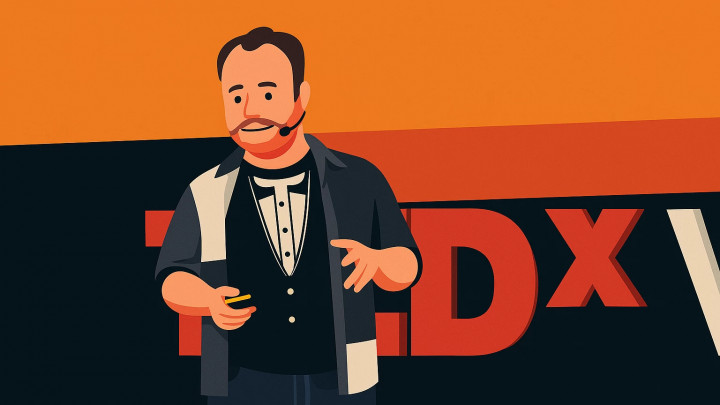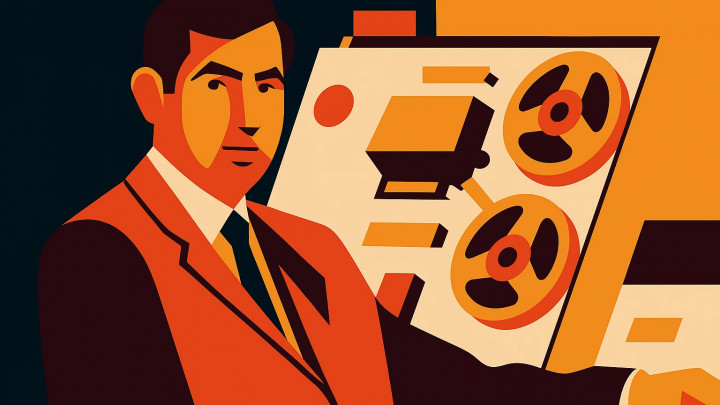Learn a Language in Motion: How TPR Makes Vocabulary Stick
Are you tired of endlessly drilling flashcards? Do you ever feel that language learning is a bit of a chore? Imagine if learning could be as natural and fun as playing a game.That’s the promise of Total Physical Response, or TPR—a method that uses physical movement to help you acquire new words and phrases almost effortlessly.

Developed in the 1960s by Dr. James Asher, an American psychologist, TPR is based on a simple observation of how children learn their first language. They listen, understand commands, and respond with actions long before they ever start speaking. TPR brings this intuitive process into your language learning journey.
Why Is It So Effective? The Science Behind the Movement
TPR isn't just a fun gimmick; it's grounded in solid neuroscience. Its success lies in several key principles:
- Whole-Brain Learning: When you hear a command in your target language (like "¡Levántate!") and you physically perform the action (you stand up), you activate two different parts of your brain in harmony. Your right hemisphere, which governs movement and spatial reasoning, links up with your left hemisphere, which processes language. This two-way connection creates a much stronger and more durable neural pathway than passively reading or hearing a word.
- Stress-Free Acquisition: In the initial stages of TPR, the focus is entirely on comprehension, not production. You don’t have the pressure of trying to speak immediately; you just have to respond with an action. This dramatically lowers the "affective filter"—the mental and emotional barrier of anxiety that can hinder learning—making your brain far more receptive to new information.
- Kinesthetic Learning: We all have different learning styles. TPR is built on the kinesthetic (or "learning by doing") style, which is incredibly effective for many people. When information is tied to an action, your brain stores it more deeply and in context. You’re not just learning an abstract word; you’re internalizing a complete experience.
TPR at a Glance: The Pros and Cons
Advantages:
- Extremely fun and motivating: Its game-like nature takes the pressure off "studying."
- Fast and long-lasting retention: Memories linked to movement are harder to forget.
- Ideal for beginners: Perfect for rapidly building a core vocabulary of verbs, nouns, and commands.
- Reduces inhibitions: Since you don't have to speak right away, it builds confidence.
Limitations:
- Abstract Concepts: It's difficult to physically represent words like "democracy" or "theory."
- Advanced Grammar: It's less suited for teaching complex sentence structures and grammatical rules.
- Physical Constraints: Learners with physical disabilities may find it challenging to perform all the actions.
It's important to see TPR not as a single solution, but as a fantastic tool in your language-learning toolbox. It's most powerful when combined with other methods, like the Spaced Repetition System (SRS) used in the Vocafy app.
How to Use TPR in Practice—Even When You're Alone
You don't need a teacher or a class to get started. You can use TPR effectively at home, especially with an app like Vocafy!
- Start with the Basics!
Choose 5-10 basic action verbs in Spanish (e.g., levantarse, sentarse, saltar, correr, abrir, cerrar, tomar, poner). Say the command form out loud (or listen to the pronunciation in Vocafy), and then perform the action. For example: You say, "¡Salta!" and you do a little jump. - Involve Your Environment!
Look around your room. Learn the names of objects by giving yourself simple commands. "Toca la mesa." (Touch the table.) "Abre la ventana." (Open the window.) "Toma el libro." (Take the book.) As you perform the action, your brain links the word to both the object and the physical movement. - Narrate Your Day (TPR-S)
This is a more advanced but highly effective "Self-Talk" technique. As you go about your daily routine, tell yourself (out loud or in your head) what you're doing. For instance, in the kitchen: "Estoy abriendo la nevera." (I am opening the fridge.) "Estoy tomando la leche." (I am taking the milk.) "Estoy sirviendo la leche." (I am pouring the milk.) This puts your language skills into a real, living context. - Use Vocafy Creatively!
When you learn a new word in the Vocafy app, don't just look at it.- If it's a verb (like escribir - to write), perform the action: pretend you're writing.
- If it's an object (like manzana - apple), point to an apple or mime holding one.
- If it's an adjective (like grande - big), spread your arms wide. For pequeño (small), curl up.
Who Is TPR For?
- Beginners who want to build a solid foundation of core vocabulary quickly.
- Children (and the young at heart) who prefer playful, engaging learning.
- Kinesthetic learners who learn best by doing.
- Anyone who is tired of traditional flashcards and wants to add some energy and fun to their language studies.
Final Thoughts
Total Physical Response is a brilliant reminder that language learning can be active, enjoyable, and incredibly effective. By involving your body in the process, you not only supercharge your memory but also build a more positive and lasting relationship with learning.
Give it a try today! Pick five words from your Vocafy study list and invent a simple movement for each one. Repeat them a few times and notice how easily they stick. You’ll be surprised at the results.





